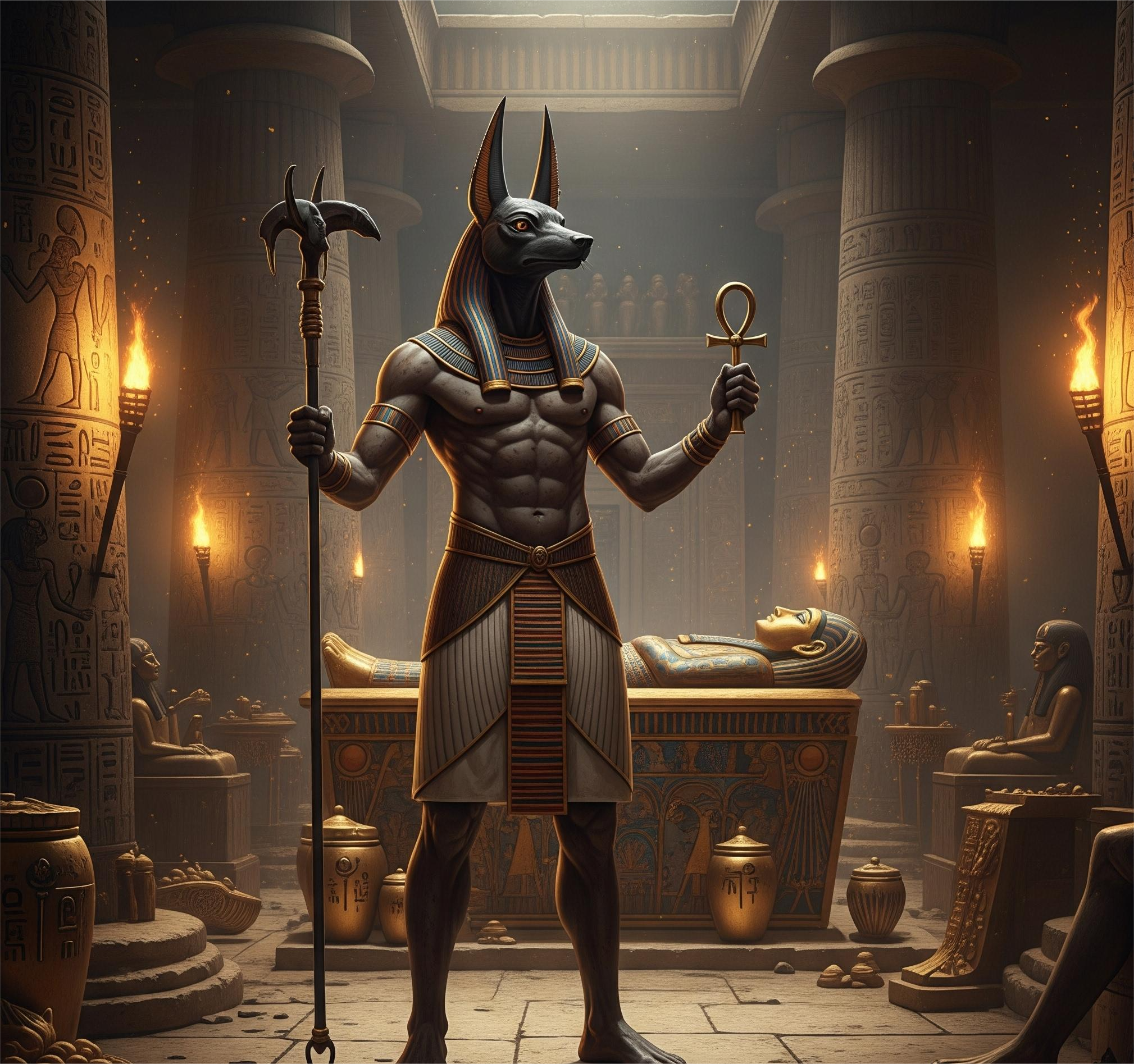In the vast pantheon of ancient Egyptian gods, few hold as enduring a place as Anubis, the jackal-headed deity who reigned over death, embalming, and the sacred rites of burial. Depicted with the sleek black head of a jackal and the body of a man, Anubis was more than a god—he was a guide, a protector, and a judge for those crossing into the afterlife. His presence permeated tomb walls, funerary texts, and the very rituals that defined Egyptian mortuary culture.
But who was Anubis, really? Why was he worshipped so fervently, and how did his role evolve across the centuries?
Origins of Anubis: From Primeval God to Osirian Assistant
Anubis, known as Inpu in ancient Egyptian (sometimes rendered as Anpu or Anoubis in Greek), likely began as one of the earliest deities in the Egyptian pantheon. Archaeological evidence places his worship as early as the First Dynasty (c. 3100–2900 BCE). In these early periods, before Osiris became the dominant god of the dead, Anubis was the primary funerary deity.
His association with jackals came from real-life observations: wild dogs and jackals often roamed the edges of cemeteries in the desert, scavenging shallow graves. Rather than demonizing these animals, Egyptians deified them—turning the jackal into a powerful guardian of the tomb.
Role in Mythology: Judge, Protector, and Guide
Protector of the Dead
Anubis’ earliest function was that of protector of graves and cemeteries. His image was carved into tomb walls, sarcophagi, and statues, serving as a supernatural safeguard against grave robbers and evil spirits. His presence ensured that the dead were not disturbed.
God of Mummification
Perhaps the most iconic role of Anubis was as the god of embalming. According to myth, it was Anubis who embalmed Osiris after he was murdered by his brother Set. This sacred act became the prototype for all human mummification.
Egyptian priests would even wear jackal masks during mummification ceremonies to represent Anubis, reciting prayers and spells as they performed the delicate art of preserving the dead. Every bandage, incision, and jar of natron was done under his spiritual guidance.
Psychopomp: Guide to the Afterlife
Anubis served as a psychopomp, a divine escort for souls entering the Duat (the Egyptian underworld). He guided the deceased through the various dangers of the afterlife and led them to the Hall of Ma’at for judgment.
The Weighing of the Heart
One of Anubis’ most famous roles appears in the Book of the Dead, where he oversees the weighing of the heart ceremony. The heart of the deceased was weighed on a scale against the feather of Ma’at (truth and justice). If the heart was lighter, the soul passed into paradise. If heavier, it was devoured by Ammit, a monstrous goddess with the head of a crocodile and body of a lion and hippopotamus.
Anubis, impartial and silent, was the divine technician of judgment, ensuring the scales were balanced.
Anubis vs. Osiris: A Shift in Divine Authority
Over time, particularly during the Middle and New Kingdoms, Osiris rose to prominence as the god of the dead and the king of the afterlife. Anubis did not disappear but shifted roles, becoming Osiris' assistant and embalmer.
This change reflected theological developments rather than any decline in Anubis’ importance. In fact, his integration into the Osirian mythos only solidified his association with the afterlife. He remained the most invoked deity in funerary rites throughout Egyptian history.
Symbols and Worship Practices
Iconography
Black color: Anubis was always depicted with black fur, symbolizing rebirth, fertility, and the color of the fertile Nile silt.
Jackal head: Signified his connection to the desert cemeteries and his divine canine nature.
Scales and heart: Represented his role in judgment.
Was scepter: A staff symbolizing power and dominion over the afterlife.
Temples and Cult Sites
Although Anubis did not have as many massive temples as gods like Amun or Horus, he was widely worshipped across Egypt. His primary cult center was in Cynopolis (“City of the Dog”) in Upper Egypt.
Anubis was also worshipped in tombs, households, and embalming houses. Amulets, figurines, and spells invoking his protection were common burial goods, especially among elites.
Legacy and Modern Interpretations
Even after the rise of Christianity and the decline of traditional Egyptian religion, Anubis’ image endured in art, folklore, and literature. In the modern world, he is often misunderstood as a grim or malevolent figure, sometimes wrongly associated with death in a sinister sense.
But for the Egyptians, Anubis was not a god of destruction—he was a guardian, a technician, and a loyal servant of divine justice. His presence meant safety, continuity, and transformation from one world to the next.
Today, Anubis appears in everything from fantasy novels to video games, evidence of his lasting power as a symbol of mystery and the afterlife.







